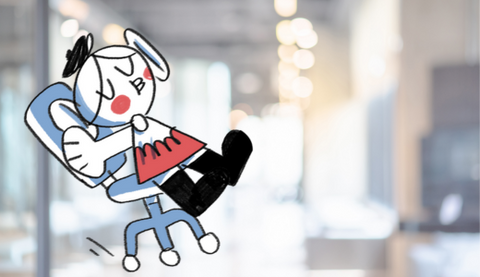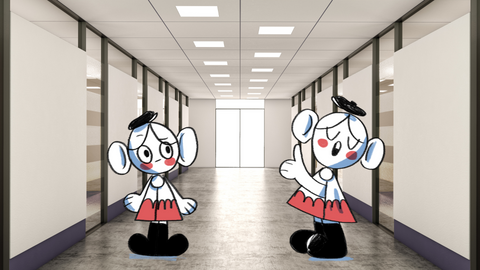ℹ️ Skip to key parts of the session by clicking on the chapter dots along the timeline.
We look at how to implement Popcorn Boards into your team with Pip Decks Founder Charles Burdett.
👉 View the Miro board for this session
What is a Popcorn Board?
“Treat everything as an experiment!”
A Popcorn Board is a “to do” list board or a Kanban board used for tracking hypotheses. This framework is a powerful tool to introduce to your team because it tracks your problems and treats ideas/work as experiments, rather than releases or features. The board demands that you trial your ideas rather than worrying about what might not work.
Why is it called a Popcorn Board?
The board is split is to the following columns:
P – problem/observation
O – options
P – potential solutions
C – committed
O – ongoing
R – review
N – next
It’s important to note that you can change the names of these columns if it makes it easier for your group to understand. However, it must still resemble the problem > solution > outcome framework.
How to Use a Popcorn Board
Column 1: Problem / observation
In your first column, list your most important or critical problems/observations.
In our session, we used the following examples:
- Hughie (Charles’ baby son) not sleeping
- Dog barking at the postman
- Forgetting to take vitamins
There is no rule on how many problems/observations you should put in this column, although it’s best to try and limit these to 3 or 4 of your most important ones.
It’s also best practice to discuss with your group the order of importance of the problems. To simplify this part, you could use Impact Effort Mapping. Or, try plotting your problems on a Y-axis (with the top of the axis being most important and the bottom is less important) and discuss the order of these until you come to a group consensus.
If you find that you have a lot of problems, group these into themes and then transform them into How Might We Statements. Then sift through them and find the ones that take priority. You can vote on which problems are the most important and then add these to the board.
Prioritisation really is the name of the game with Popcorn Boards!
Tip: don’t discard the additional problems that your group has come up with. Try and keep a prioritised backlog of these but keep them out of sight to ensure your Popcorn Board stays manageable.
Column 2: Options
After listing your important problems, you then need to then ask yourself; what options do we have to solve these problems?
To generate ideas for this part, you could use the Crazy Eights tactic. Or just float ideas around out in the open.
Try and list a minimum of 3 options per problem.
For example, in our session we took the problem of Hughie not sleeping at night and came up with the following 3 options:
- Scarecrow Dad
- Soundproof door
- Goat milk suspenser
(If you are totally confused by how we came up with these options, please watch last week's Idea Storm Session!)
Column 3: Potential Solution
As a group, decide on the best option for each solution and move these into the Potential Solution column.
Now, you need to change this option into a Hypothesis Statement. If you are not sure how to write a clear and precise Hypothesis Statement, you can view the Workshop Tactic here. Or, use the below template:
“We believe that [doing this/building this feature/creating this experience] for [these people/personas] will achieve [this outcome].
We will know this is true when we see [this market feedback, quantitative measure, or qualitative insight].”
If you are creating your Popcorn Board on Miro, use the “Card” function instead of sticky-notes so that you can add more text.
Column 4: Committed
Once you have come up with a potential solution and want to run the experiment, move the card into the Committed column.
In this column, you want to assign accountability for your potential solution experiment by answering the following questions and adding this information to the card:
- Who’s going to do it?
- What are you going to do?
- When is the experiment going to start?
-
How long are you going to run the experiment for/when are you going to review it? This question is incredibly important because it demands a date for when you are going to come back and review what happened during the experiment!
The Who, What, When Workshop Tactic is a great tool for this part as it encourages people to take action!
Column 5: Ongoing
Once someone has committed to taking on the experiment and set a review date, you would then move the card into the Ongoing column.
Column 6: Review
Tip: The review date you set in the committed column should coincide with a weekly/bi-weekly popcorn board session where you come back to the board and review, update, or add-in new experiments.
When you come to review the ongoing experiments, work from the left to the right on the board. Check the dates on the cards and move to the ‘Review’ column if they should have been completed.
Spend a session reviewing the experiments and asking the following questions:
- What did we say we were going to do?
- What did we actually do?
- What did we expect to happen?
- What actually happened?
Reviewing your work is incredibly valuable because you get an insight into what worked and what didn’t. It’s so important to check that the product/service you are creating is actually solving the problems you outlined at the beginning.
Having a clear and obvious ‘next step’ indicates that you have finished reviewing the experiment.
Column 7: Next
After a thorough review of the experiment, move the card into the ‘Next’ column and add your next step to the card.
If your findings have come up with another problem, this new problem should be put in column 1 on your Popcorn Board and restart the process.
Q&A
Q: If your hypothesis changes would you go backward or create a new problem statement?
A: With Kanban boards, the rule of thumb is to never go back. If the experiment ends-up changing, that’s fine. If it is a new problem, discovered by running your first experiment, you should create a new ticket for this a put it in column 1 to start the process again.
Q: What steps can you take to omit bias using the popcorn board?
A: You have to be really aware of bias, to begin with. The more you learn about what makes a good hypothesis and experiment, the more you can omit bias. What’s great about a hypothesis is that it asks for a blend of quantitative and qualitative feedback. But, the only thing you can really do is be aware of it and nudging your team when you feel like you might only get limited evidence back from the experiment.
You could add any data you might have to your hypothesis so that it gives you some initial weight to the assumption.
Tip: try and trust your gut based on the information that you have to hand.
Q: How do I introduce Popcorn Boards as a way of working with my team?
- Don’t make a song and dance about it as people tend to dismiss change.
- Introduce Popcorn Boards to a small team of people first and see how it goes before sharing it with a wider group
- Ensure you set a time/date weekly to come back to the board and review it – try and make this a habit for all members of your team
- Emphasise that you have no obligation to continue with it if it doesn’t work but there’s no harm in trying it for 2 weeks to see how it goes
- If you already use Kanban boards, perhaps try implementing elements of a Popcorn Board on to what you already have and see it if works
- Change the labels so that it feels familiar to a Kanban board
- Try it for yourself! Hold yourself accountable for your own personal board before implementing it with your team.
Q: How does this work with Agile?
A: This framework is agile. It’s flexible, tries things out, and moves quickly.
Q: There is a tendency for tickets to get stuck in the ‘Ongoing’ column, how would you unstick these experiments?
A: The criteria that you add to the card in the committed column will ensure that your experiments don’t get stuck. Try and not have an experiment running for longer than 2 weeks so they aren’t forgotten about.
Q: Would this make a good retro?
A: You can take your next steps that come out of the Popcorn Board and do a retro around that. Or you can use it to track actions that came out of your retro – treat these actions as experiments and add them to your Popcorn Board.
Q: How could this help embed hypothesis-driven design on teams that resist it?
A: The hardest thing will be persuading people to use it. Check out the article below by Ben Mosier titled Nobody Cares About Your Precious Framework because it’s true. Don’t be pushy about it, try and make the Popcorn Board an experiment in itself.
Q: Any tips on prioritising experiments between different problems?
A: Try and make a clear distinction between the problem and the experiment – the experiment should be prioritised based on the importance of solving that problem. I advise to only run one experiment per problem.
Further reading
- Atomic Habits By James Clear
- Nobody Cares About Your Precious Framework
- Check out The Service Startup for some good ideas about how you can convince people to show up
- Harvard Business Review – Digital Transformation is Not About Technology









